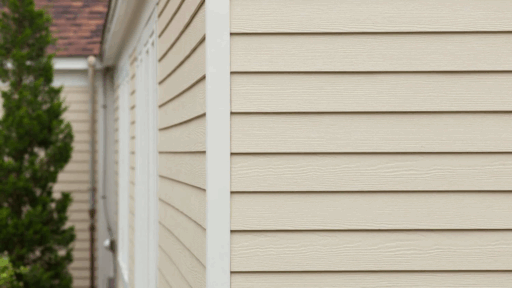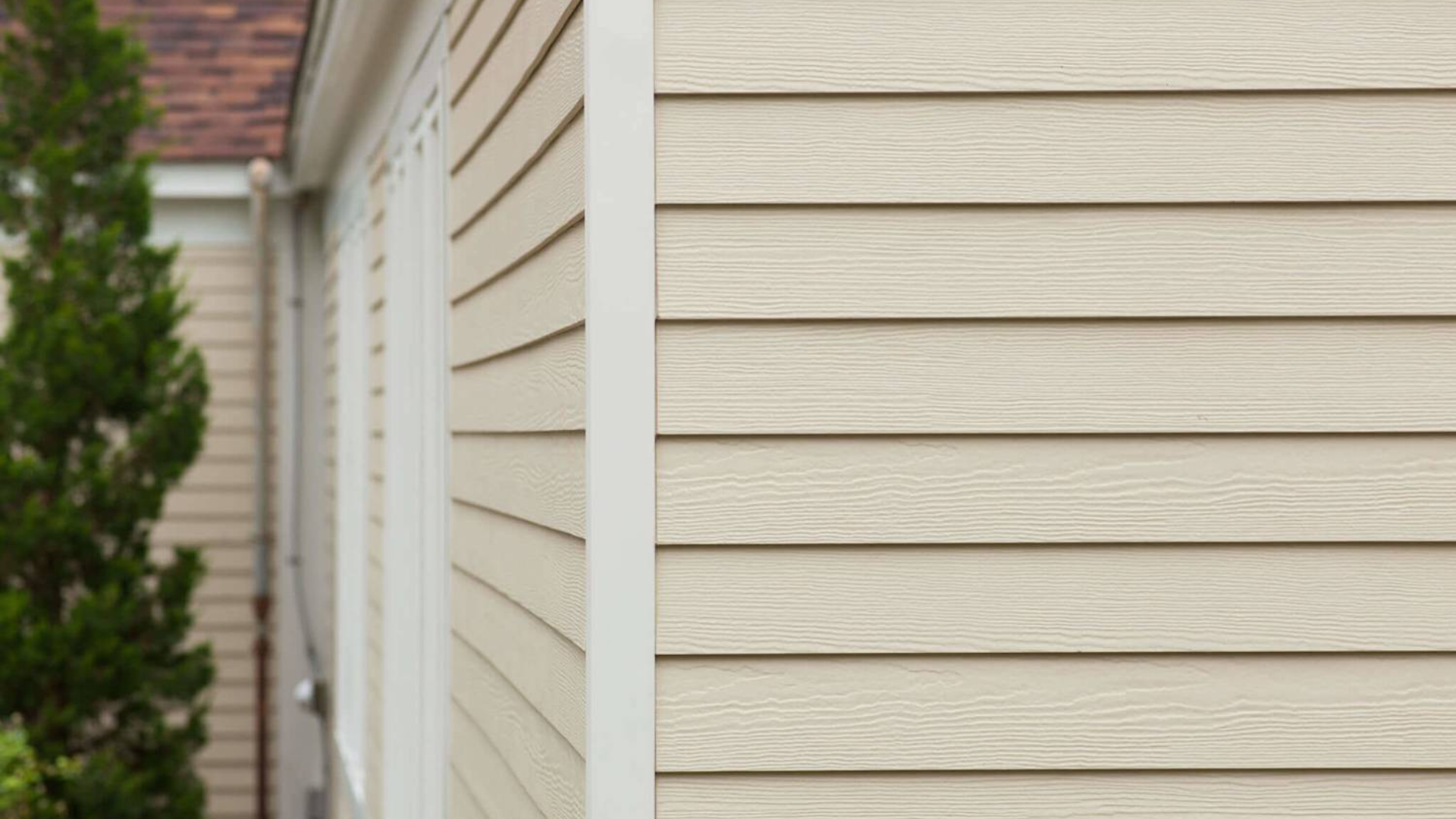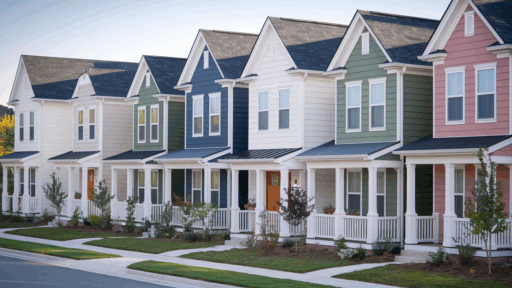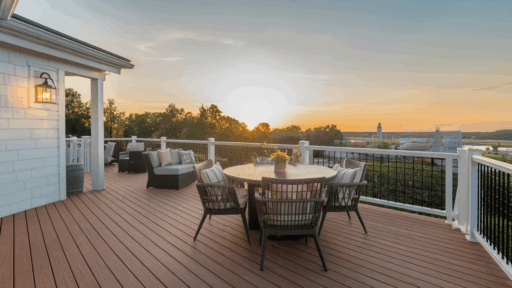You’re thinking about new siding, and vinyl keeps coming up, but what is it really made of, and why does that matter?
With so many options out there, it’s easy to feel overwhelmed. Each type promises something: lower costs, better durability, or less upkeep.
Here’s the thing: knowing what vinyl siding is made of helps you make a smart choice. It tells you how it performs, how it’s installed, and what kind of care it needs.
I’ve helped many homeowners through this, and having the right info has saved them money and stress.
In this article, you’ll learn what’s inside vinyl siding, why the materials matter, and how it stacks up against other siding types.
Since siding lasts for decades, let’s make sure you start with the facts.
What Is Vinyl Siding Made Of?

Vinyl siding is made mostly from a type of plastic called PVC (polyvinyl chloride).
This material is strong, flexible, and weather-resistant, making it a great choice for covering the exterior of homes. But there’s more to vinyl siding than just plastic.
The Two Main Layers
Vinyl siding is built with two main layers:
- The Top Layer (Capstock): This outer layer includes PVC mixed with color and UV protection. It gives the siding its color and helps block sunlight, preventing the color from fading quickly. Some manufacturers also add extra coatings to make it more scratch- or stain-resistant.
- The Bottom Layer (Substrate): This inner layer is made with a heavier PVC mix, often blended with recycled materials. It adds strength and helps the siding stay rigid and in shape during hot or cold weather.
Additives That Make a Difference
To improve how the siding performs, manufacturers add a few key ingredients:
- Titanium Dioxide: This helps protect against UV rays, keeping the color from fading.
- Impact Modifiers: These help the siding handle hits from things like hail or a stray baseball without cracking.
- Lubricants and Stabilizers: These help with the manufacturing process and keep the siding strong over time.
Why These Materials Matter
The mix of PVC and additives makes vinyl siding:
- Lightweight and easy to install
- Resistant to rot, moisture, and bugs
- Low maintenance, no painting needed
- Long-lasting, with many brands offering warranties of 20–40 years
Understanding what vinyl siding is made of helps explain why it’s one of the most popular choices for homes today.
It’s built to look good and last, without making your home harder to care for.
Why the Composition of Vinyl Siding Matters?
The materials used in vinyl siding directly affect its lifespan. Cheaper siding often uses fewer additives, which means it wears out faster.
UV stabilizers protect against sun damage. Without them, siding fades and cracks much sooner. Impact modifiers help it survive hail and flying debris, which is key in storm-prone areas.
The quality of PVC matters too. Virgin PVC holds color better and resists warping more than recycled content.
Thicker siding is stronger and keeps its shape longer. Some types have foam backing, which adds insulation and makes installation easier.
Color also plays a role. Built-in color lasts longer than painted surfaces, which can peel or chip over time.
When comparing siding, don’t just look at the price; consider the quality as well. Check the materials and additives to see what you’re really getting.
Vinyl Siding vs Polymer Siding
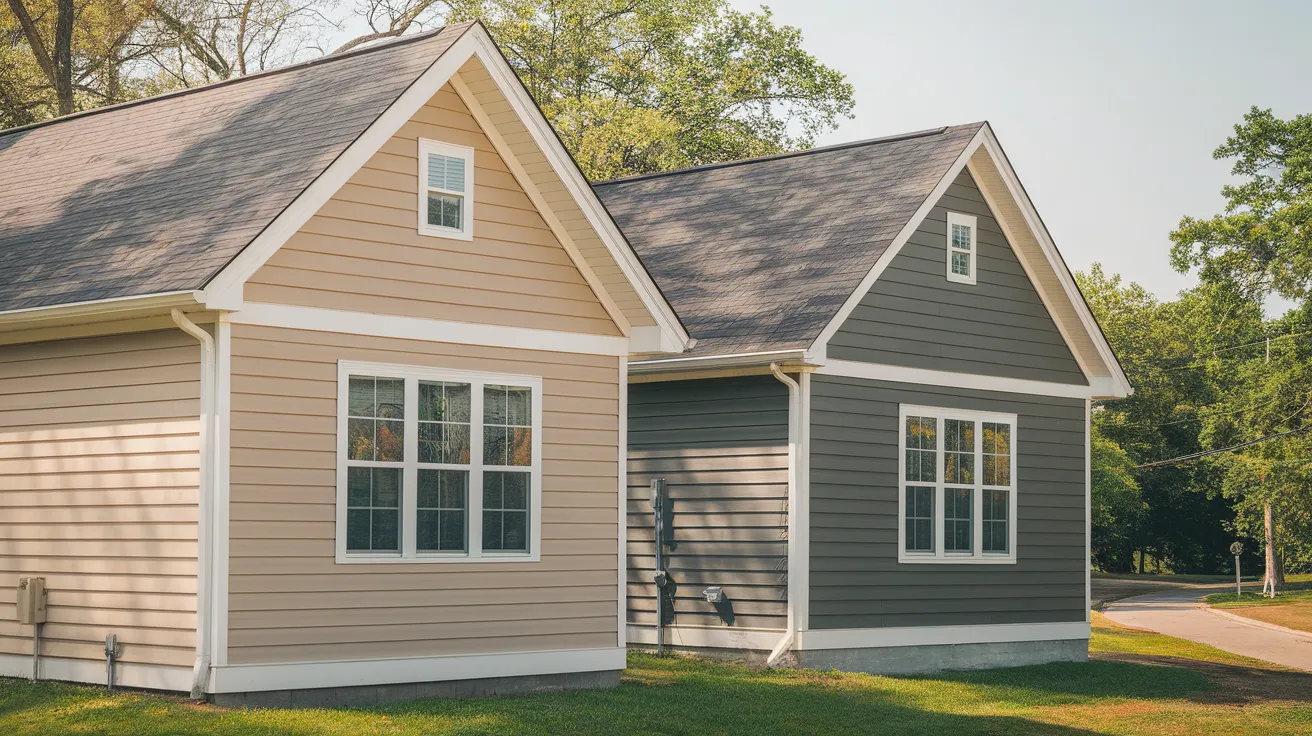
Many homeowners confuse vinyl and polymer siding. While vinyl is technically a polymer, the siding industry uses these terms differently.
Polymer siding typically refers to engineered composite materials that blend multiple polymers for enhanced performance.
1. Material Differences
Vinyl and polymer siding may seem similar, but they’re made differently. Understanding their materials helps you choose the right one for your home.
Vinyl siding is based on a simple plastic formula, whereas polymer siding blends different compounds to achieve added texture and enhanced performance.
| Feature | Vinyl Siding | Polymer Siding |
|---|---|---|
| Base Material | PVC (polyvinyl chloride) | A mix of plastics like polypropylene and polyethylene |
| Material System | Single polymer | Multi-polymer or composite |
| Common Additives | UV stabilizers, impact modifiers | May include wood fibers, fillers, or advanced resins |
| Texture & Appearance | Smooth or basic wood grain | Can mimic natural materials more closely |
| Cost to Produce | Lower | Higher due to complexity |
Both options offer durability, but the additional materials in polymer siding provide it with greater flexibility in style and appearance.
If you want a natural look with added performance, polymer might be worth the extra cost.
2. Durability and Performance
When choosing between vinyl and polymer siding, durability is a major factor. Both can last for decades, but their performance depends on the material quality and the craftsmanship.
Polymer siding often offers additional benefits in harsh conditions.
| Feature | Vinyl Siding | Polymer Siding |
|---|---|---|
| Typical Lifespan | 20–40 years | Often 30+ years, sometimes more |
| Durability Factors | Depends on additives and PVC quality | More impact-resistant and weather-tolerant |
| Color Retention | It can fade over time in harsh sun | Holds color longer, especially in sunny climates |
| Temperature Stability | Expands/contracts more; risk of warping | More stable; less prone to buckling |
| Pest and Rot Resistance | Excellent when properly made | Excellent; also resists rot and insects |
| Paint Requirements | No painting needed if high-quality | No painting is needed if properly manufactured |
While high-end vinyl can match some polymer features, polymer siding tends to perform better in extreme conditions and holds up well over time.
3. Design
When it comes to style and appearance, both vinyl and polymer siding offer a range of choices.
However, polymer siding often goes further in mimicking natural materials. Understanding the design features and differences can help you choose what best suits your home’s look.
| Feature | Vinyl Siding | Polymer Siding |
|---|---|---|
| Color Options | Wide range, expanding yearly | Also offers a wide variety, with stronger fade resistance |
| Texture Options | Smooth or lightly embossed | Realistic wood grain, stone, or shake-like finishes |
| Design Variety | Good variety with new styles added often | More advanced patterns for natural appearance |
| Installation | Standard tools and techniques | Some types need special tools and skills |
| Color Retention | May fade over time in strong sun | Better UV resistance and color hold in harsh climates |
If you’re after a more natural, detailed look, especially one that mimics the appearance of wood or stone, polymer siding offers greater flexibility and realism.
But vinyl still offers great choices for those seeking style on a budget.
4. Cost Considerations
When comparing siding options, cost plays a big role.
Vinyl siding is often chosen for its low upfront price, but polymer siding may offer better long-term value depending on your goals and budget.
| Feature | Vinyl Siding | Polymer Siding |
|---|---|---|
| Upfront Cost | Lower, more budget-friendly | Higher, more expensive to purchase |
| Maintenance | Low; no painting, just occasional cleaning | Also low; similar care needed |
| Insurance Benefits | Standard coverage | May qualify for impact-resistance discount |
Vinyl siding keeps initial costs low, making it a solid choice for budget-conscious projects.
Polymer siding, although pricier, may offer added value through its durability and potential insurance savings.
5. Use Cases and Applications
Choosing between vinyl and polymer siding often comes down to your home’s location, purpose, and design needs.
Both options have their place, but some situations clearly favor one over the other.
| Use Case | Vinyl Siding | Polymer Siding |
|---|---|---|
| Budget-Friendly Projects | Ideal for keeping costs low | Less suited due to higher upfront cost |
| Standard Homes | Great for typical residential applications | Maybe more than needed for basic use |
| Harsh Climates | Performs reasonably, may fade or warp | Better for coastal, storm-prone, or extreme weather areas |
| Commercial Buildings | Used in basic applications | Preferred for added durability and impact resistance |
| Historic Renovations | Limited in texture and style | Better texture matches, closer to original materials |
| Energy Efficiency Goals | Some options are available with insulation backing | Often offers better insulation properties |
Vinyl works well for many homes, but polymer siding excels in tougher environments or specialty projects, such as historic renovations or commercial use.
Pros and Cons of Vinyl Siding
Vinyl siding is one of the most popular choices for homeowners due to its affordability and low maintenance requirements.
But like any material, it comes with its own set of benefits and drawbacks. Knowing both sides can help you decide if it’s the right fit for your home.
Pros of Vinyl Siding:
- Low maintenance
- Cost-effective
- Weather resistant
- Color variety
- Easy installation
- Lightweight
- Recyclable
Cons of Vinyl Siding:
- Can crack in extreme cold temperatures
- Fading is possible with lower-quality products over time
- Expansion issues
- Limited repair options
- Appearance concerns
- Wind damage potential
- Color limitations
Conclusion
Knowing what vinyl siding is made of helps you make a smarter choice. You’re not just buying plastic, you’re picking materials that protect your home.
The right mix of additives prevents fading and cracking. High-quality PVC lasts longer and handles the weather better.
Don’t choose based solely on price. Look for UV stabilizers and impact modifiers, and inquire about the thickness and material quality.
While budget matters, cheap siding often means more repairs later. Better materials bring better value over time.
Consider your climate. Tough weather needs stronger siding, but standard vinyl may work in mild areas.
Consult with a local contractor before making a decision. They’ll help you choose what works best for you.
Got questions? Share your experience in the comments. It could help others, too. If you learned something from this blog, read about how you can decorate outdoors for Christmas.
Frequently Asked Questions
How Long Does Vinyl Siding Typically Last?
High-quality vinyl siding usually lasts 20 to 40 years. Its lifespan depends on your climate, the quality of its installation, and the grade of material used by the manufacturer.
Can Vinyl Siding Be Recycled After Removal?
Yes, vinyl siding is recyclable. Many recycling centers accept PVC, but it’s always best to check with local facilities first to confirm if they take construction materials like siding.
Does Vinyl Siding Insulation Value Compare to Other Materials?
Standard vinyl has little insulation. Insulated vinyl improves R-values slightly, but still doesn’t match the thermal performance of materials like fiber cement or insulated panels.
Can You Paint Vinyl Siding to Change Its Color?
You can paint vinyl siding, but it’s not usually recommended. Paint may peel or crack over time, and painting can void the manufacturer’s warranty.
What Thickness Should You Look for in Quality Vinyl Siding?
Aim for siding that’s at least 0.040 inches thick. Thicker vinyl resists damage better, appears more solid, and lasts longer, especially in harsh weather conditions.

